If you've been following the supplement industry for the past few years, you've clearly seen the growing trend for gummy supplements. The soft and chewable form factor is quickly replacing chewable tablets in many product categories, and they're no longer just for kids!
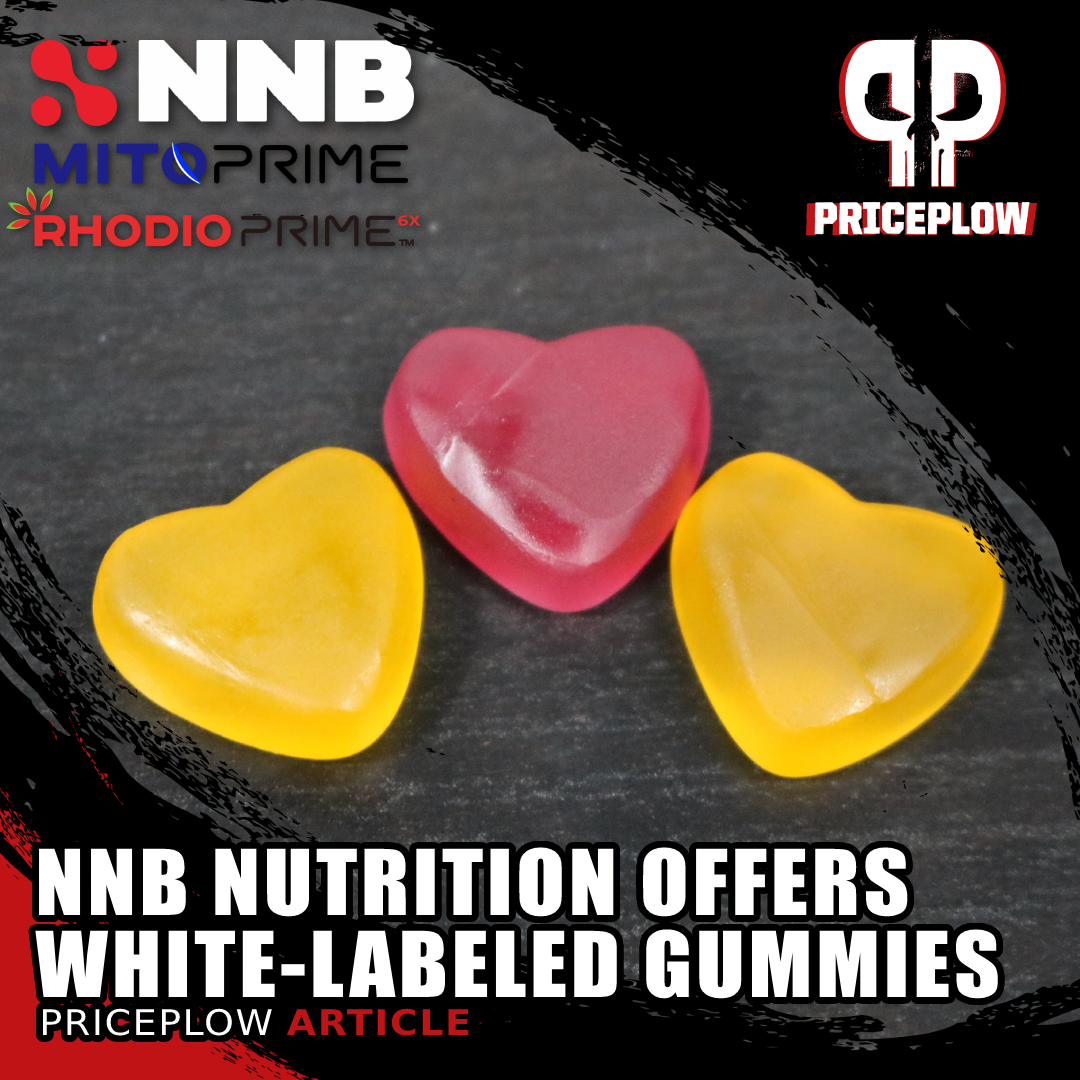
NNB Nutrition is now offering brands Whitelabeled Gummies of their novel ingredients like MitoPrime (L-Ergothioneine) and RhodioPrime 6X -- and they are superb!
The growing gummy trend serves itself well to ingredients that work well in low doses and can be "baked" or heated without much degradation. They're increasingly popular in categories such as vitamins, hair/skin/nail support products, probiotics / digestive supplements, and immunity boosters.
Many consumers love gummy supplements -- especially those who don't want to swallow capsules or mix powders -- and brands are responding with evermore gummy products. The issue is that gummy formulation is hard, and the most reputable gummy manufacturers are booked solid.
In response, novel ingredient developer NNB Nutrition has created its own gummy supplement line, and is offering whitelabel opportunities to brands that'd like to utilize their incredible ingredients! They're initially offered in for:
- Skin Care: Collagen + MitoPrime (ergothioneine)
MitoPrime (L-ergothioneine) is a patent-pending antioxidant ingredient that has incredible effects. In this article, we focus on its skin care benefits.
Feel-good adaptogen: RhodioPrime 6X (high salidroside Rhodiola)
- Immunity and longevity: Pure ergothioneine
- Ketone Support: goBHB (this one is exclusive to Real Ketones)
Note that these aren't (yet) for sale to consumers in America - this article is for brands looking for a novel gummy-based business opportunity using NNB's ingredients.
Below, we talk about these sugar-free gummies, and briefly explain each of the ingredients offered inside. But if you're interested in offering your own line of gummies using NNB's ingredients, Contact PricePlow below and we'll get you in touch with the right contacts:
About NNB Nutrition's Gummy Platform
NNB's Gummies are:
- Sugar-Free
- Fat-Free
- Non-GMO
- 100% Natural
NNB Gummy Supporting Ingredients
To keep them sugar-free, the gummies use a combination of two sugar alcohols in maltitol and xylitol, combined with gelatin and agar. They also include stevia sweetener, malic and citric acid, natural colors and flavors, and carnauba wax.
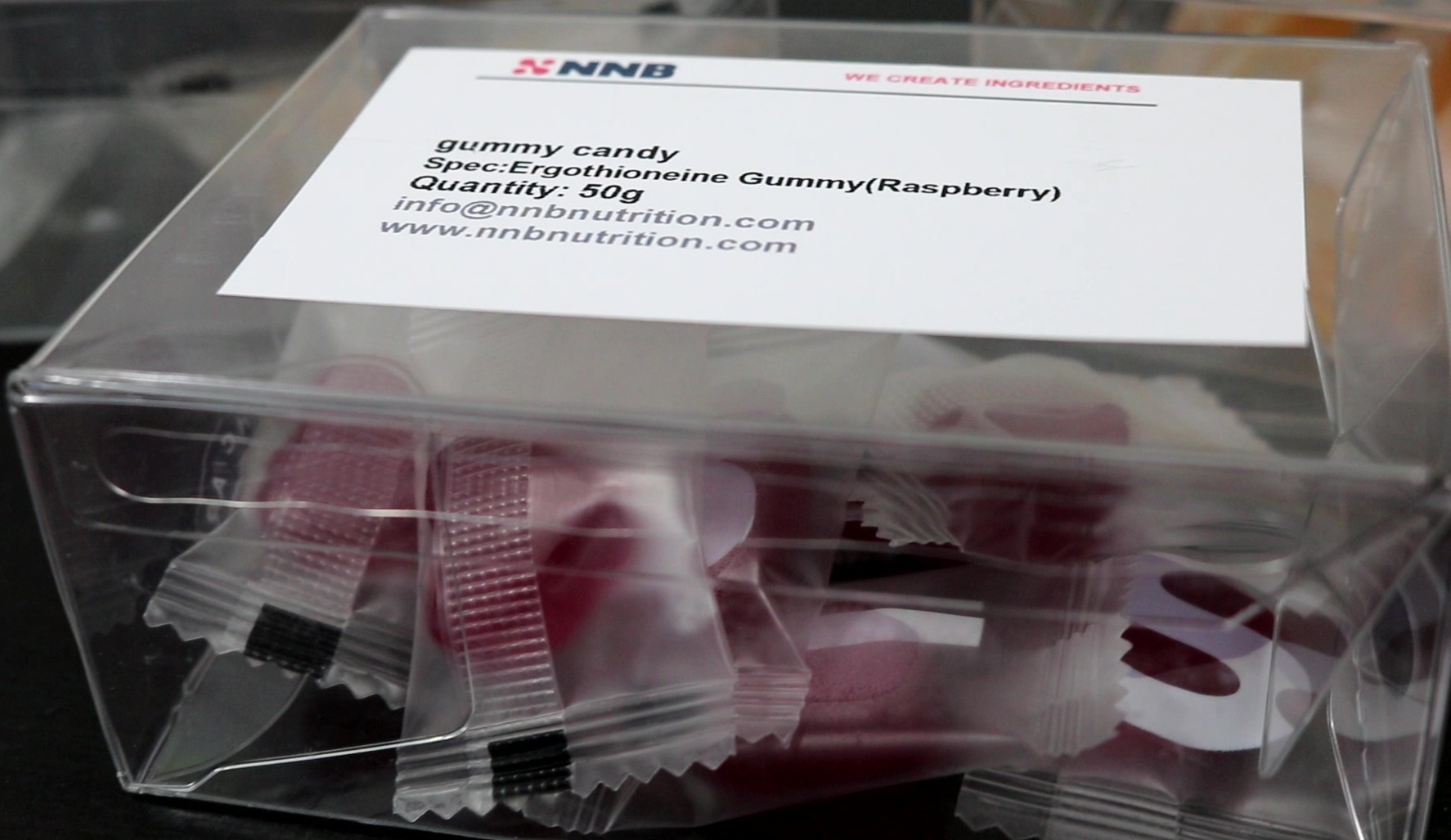
NNB Nutrition has some samples of their MitoPrime gummies, and the raspberry flavor is especially delicious!
The ergothioneine doses can come in 5 milligrams or 1 milligram each.
Flavors available
At release, the first three flavors available are:
- Orange
- Lemon
- Raspberry
More flavors are on the way, with rumors that an incredible peach oolong tea flavor is in testing.
The ergothioneine gummies we've tried are also heart-shaped, which will be pleasing to the crowd enjoying its hair, skin, and nails benefits.
Packaging Options
Brands that are re-selling these gummies can choose one of three form factors:
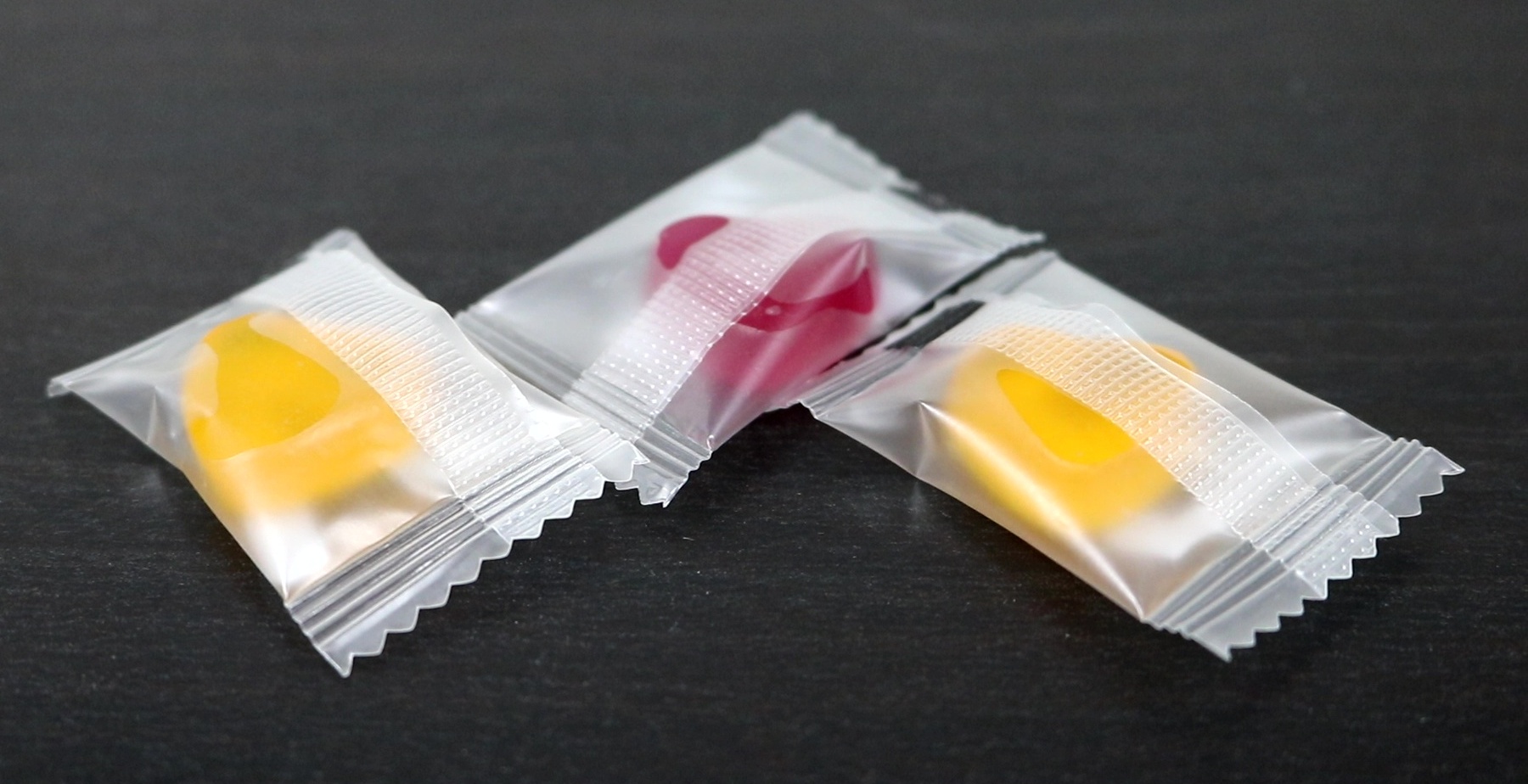
Have your own packaging? NNB can individually wrap them for you, if desired. Otherwise, you can get bulk delivery for your own bottling.
- Fully packaged: NNB can do all of the work up front, providing 45 individually-wrapped gummies in a sealed box.
- Individually wrapped: If you have your own bottle or packaging, brands can simply buy the individually-wrapped gummies without the box.
- Gummies only: Many gummies come in a bottle without individual packaging. Brands wishing to sell a bottle with gummies only can simply order the bulk gummies from NNB. Note that they may stick to each other a bit in your bottle, like other gummy supplements.
NNB Nutrition Gummy Active Ingredients
The first three novel ingredients NNB has demonstrated to work in their gummies are MitoPrime (L-Ergothioneine), RhodioPrime 6X (high-salidroside Rhodiola), and goBHB (exogenous ketones exclusive to Real Ketones).
Let's get into each one below, starting with MitoPrime's skin care benefits:
-
MitoPrime: Patent-Pending Ergothioneine for Skin Care, Longevity, and Immunity
Ergothioneine is a powerful "amino acid antioxidant" that has incredible benefits for immunity, anti-aging, longevity, beauty, and overall health. NNB Nutrition sells it as MitoPrime, and it's one of the most fascinating biological compounds we've researched.
Found in mushrooms and organ meats, ergothioneine is the oldest -- and most overlooked -- energy-supporting immune system booster / antioxidant on the market. Prepare to have your mind blown by this ingredient.
Our main article titled Ergothioneine: The Immunity and Energy Protector is an extremely in-depth analysis of the article, and our Formulator's Corner Hypothetical Immunity Supplement formulation discusses its incredible benefits with respect for immunity. So below, we'll briefly introduce the ingredient, and then dive into its skin care potential, a major target for these gummies.
Ergothioneine has been shown to outperform popular antioxidants like vitamin C, glutathione, and coenzyme Q10, scavenging free radicals 3 to 30 times more effectively.[1-3] It protects not only against reactive oxygen species[4-7] and dangerous singlet oxygen,[8] but also reactive nitrogen species,[9,10] reactive chlorine species,[1,11] and prevents harmful lipid peroxidation.[5]
Our bodies actually have a dedicated transporter and storage system for ergothioneine,[4,12-14] where it can be deployed and used to combat harmful threats listed above. It protects our DNA, lipids, red blood cells, and energy-producing mitochondria - on demand.
In fact, ergothioneine is so powerful, many researchers call it a "candidate vitamin"[15,16] (and others call it the "longevity vitamin"[17,18]), suggesting that it should be taken on a regular basis. It's found in mushrooms and organ meats,[1,19-21] two food groups we don't eat much of, which is why we so firmly believe in taking MitoPrime every day. Now your customers can do that in gummy form!
L-Ergothioneine for Skin Support?!
The one thing we haven't covered is MitoPrime's ability to enhance skin health. The body accumulates it in the bone marrow, liver, kidney, eyes, and skin.[12,22] A 2009 article titled "Skin cells and tissue are capable of using L-ergothioneine as an integral component of their antioxidant defense system" gives a very promising and high-level overview of the molecule's ability to protect and repair skin cells.[22]
Ergothioneine serves several roles in the system, and we're already wired for it! But are you getting any in your diet?[12]
The ergothioneine transporter (ETT, formerly known as OCTN1) is heavily utilized in the epidermis, where it uses the antioxidant to reduce levels of reactive oxygen species, protect DNA and other proteins, and and prevent lipid damage in keratinocytes -- especially those subjected to oxidative stress from UV and solar light.[22-24]]
Protection from ultraviolet light
Follow-up research concluded that "ergothioneine at nanomolar concentrations effectively ameliorated UVA-induced skin damage, and may be considered as a desirable food supplement for skin protection and/or preparation of skin care products."[25] We'd like to emphasize the word nanomolar there -- it doesn't take a huge dosage of ergothioneine to support the body's health! These gummies can be dosed at 1 or 5 milligrams each (for a total of 3 or 15 milligrams per day).
In vitro analysis shows that ergothioneine accumulates in skin tissues after only one day, and after nine days, there's a sixfold increase in the antioxidant's concentration.[22] The researchers concluded the following:
In conclusion, we have provided evidence that skin cells and tissue can take up, accumulate, and utilize the potent antioxidant L-ergothioneine. The reported diverse protective effects of this naturally occurring amino acid position EGT and its receptor/transporter as an integral part of the antioxidative defense system of the skin.[22]
Improved wound healing
Further research published in 2021 showed that ergothioneine protects hyaluronic acid (an important water-retention molecule in the skin) from degradation in a dose-dependent manner.[26] It significantly reduced wound healing time when combined with other treatments that included hyaluronic acid.
With such a massive list of benefits shown from ergothioneine, why haven't we heard more about it? This is a must-research immune system supplement ingredient that can protect numerous organ systems.[27]
Additionally, NNB Nutrition's internal testing found increases of smoothness of skin and improvements to skin radiance, luminosity, evenness, texture, and elasticity.
One of the many mechanisms: better sensing and protection of skin damage
Many of its mechanisms of action are explained in the article titled "The Antiaging Activity of Ergothioneine in UVA-Irradiated Human Dermal Fibroblasts via the Inhibition of the AP-1 Pathway and the Activation of Nrf2-Mediated Antioxidant Genes".[24]
The conclusion is a bit complex, but states that ergothioneine induces Nrf2 activation (a leucine zipper protein that functions as a sensor for stress), leading to downstream protective effects -- especially in UVA-irradiated HSF (human dermal fibroblast) cells. It also increases cell viability and protects collagen from degradation by preventing extracellular matrix damage and degradation.[24]
Ultimately, this reinforces why we sometimes call MitoPrime the intelligent antioxidant -- ergothioneine can be stored and deployed for use in many situations, ranging from immunity to organ damage to skin damage. You can read many of the other details on our main Ergothioneine article.
-
RhodioPrime 6X: The feel-good, energetic, and focused side of Rhodiola
Another great ingredient that NNB can put into the gummy form factor is none other than our favorite Rhodiola extract, RhodioPrime 6X.
Years ago, we approached NNB, asking for a feel-good Rhodiola extract that focused on higher salidroside content. They came back with RhodioPrime 6X -- with a whopping 6% salidroside standardization -- and it's been a fantastic ingredient for nootropics, anxiolytics, and pre-workout supplements ever since.
Our main two articles titled Rhodiola: The Salidroside-Powered Adaptogen of the Vikings and NNB RhodioPrime 6X: The Strongest Rhodiola Extract tell the full story, but the basics are below:
Rhodiola is an adaptogenic herb with a rich historical use for vitality, mood improvement, and longevity.[28] The plant has two primary bioactive compounds that are responsible for its incredible effects: salidroside and rosavin. While many supplement formulators look for rosavin standardizations, we've come to realize that salidroside is where the effects we enjoy most come from!
Reason being, research has shown that the salidroside portion increases long-term potentiation (LTP) in the brain's hippocampus[29] while also stimulating catecholamine activity and uptake.[30-33] This provides a feel-good, nootropic effect, which is what many supplement users are looking for -- especially from a great tasting gummy supplement.
Fewer mistakes and more accuracy when tired and fatigued? This has great implications in our modern society.[34]
On top of cognitive improvements, we've consistently seen Rhodiola improve mood and well-being in research.[34,35] The catecholamine activity described above works on the serotonergic system,[36] which is a well-known regulator of mood and emotions, amongst other things. Many supplement ingredients and stimulants increase dopamine, but Rhodiola hits the other side of the "happy hormones" as well.
However, there are other mechanisms at play as well - like ergothioneine discussed above, salidroside can also protect the body from mitochondrial disturbances, improving energy and protecting cells from death.[37-39]
For these reasons, we love the high-salidroside power of RhodioPrime 6X, and are excited that it too can be added to gummies for a healthy snack that not only tastes great, but feels great as well.
-
goBHB: Exogenous ketones exclusive to Real Ketones
We recently caught up with the latest updates on exogenous ketones in our article titled Innovating BHB: NNB Nutrition and the Brains Behind Ketone Supplements.
This article clears up the confusion in the keto diet supplement space. All along behind the scenes, NNB Nutrition has been innovating the BHB salt manufacturing process, and is the sole producer of goBHB, licensed by Axcess Global for their company Real Ketones
Inside, we discussed the science and research behind the keto diet, and how taking ketone supplements such as the beta-hydroxybutyrate in goBHB can provide additional benefits for all kinds of dieters. The benefits of taking ketone supplements are broken down into sections on athletics, appetite reduction, cognition and anxiety reduction, and cardiovascular benefits.
After that, we discuss that NNB Nutrition has been the company quietly manufacturing goBHB all along, and listed the improvements they've made, starting from the racemic DL-BHB salts and upgrading to more biologically active D-BHB salts produced through biosynthesis. Also teased were the gummies, which brings us to today's article.
While NNB is the manufacturer of goBHB and goBHB gummies, the licensee of goBHB is Real Ketones, owned by Axcess Global. They're the ones we expect to have exclusivity of BHB Gummies, and once launched, can update this article with some links.
It's time for novel ingredients inside of gummy supplements
Gummies are all the rage, but some of the ingredients inside of them are... not as exciting. Sure, we're always happy to have vitamins, but the niche really starts to get interesting when the ingredients get interesting. With a company like NNB Nutrition involved, the gummy game has just been given a major upgrade.
MitoPrime is one of our favorite ingredients, but we've never approached it from the skin care angle that NNB is marketing these gummies towards. It certainly can work in immune system supplements, but the skin protection research is just as impressive. We're excited to see new ways for MitoPrime to hit the masses, because we truly believe that it's something lacking in modern diet -- but our bodies are wired for it.
Meanwhile, we'll look forward to the feel-good effects of RhodioPrime 6X along with the great taste of gummies. High-salidroside Rhodiola is an ingredient that we'll never turn down -- and so are delicious gummies. Especially that raspberry flavor NNB put out.
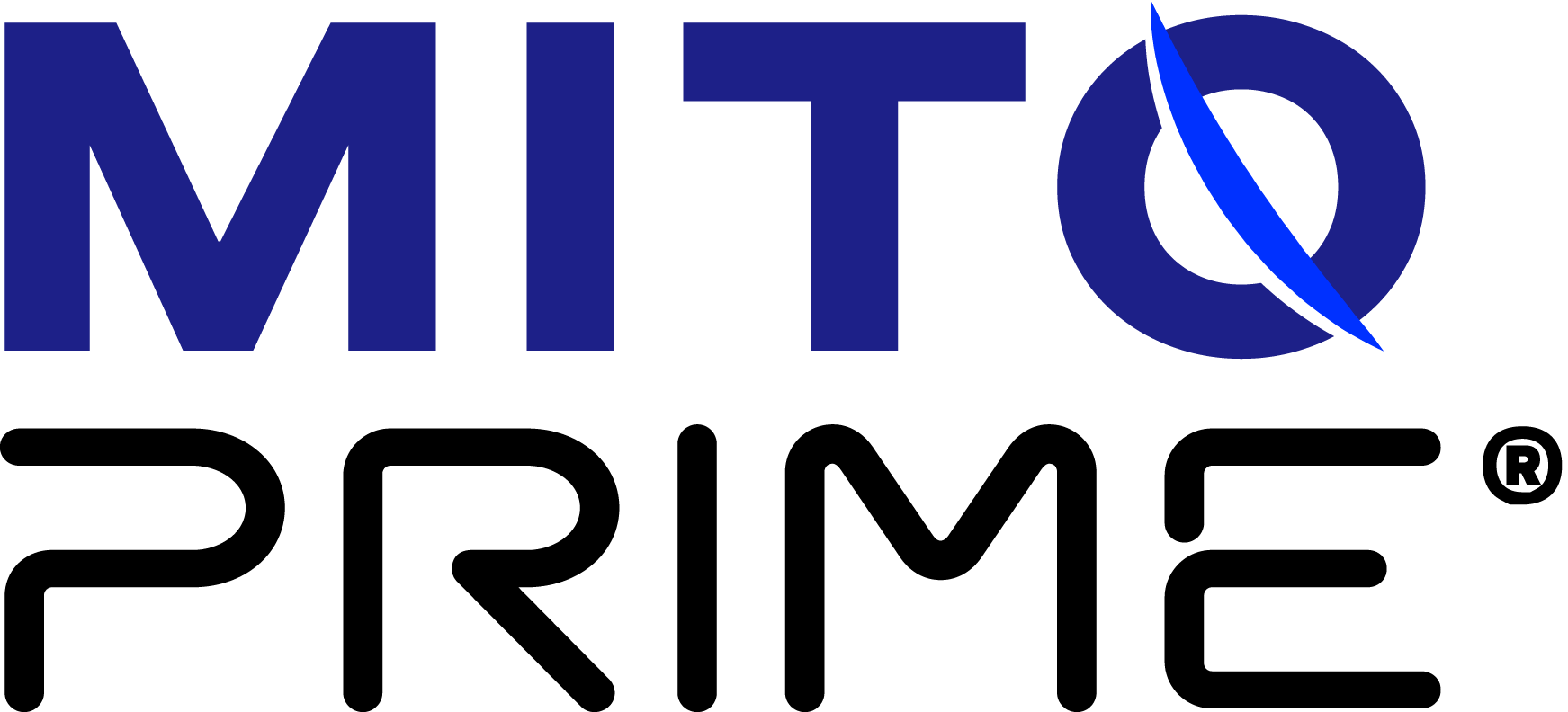
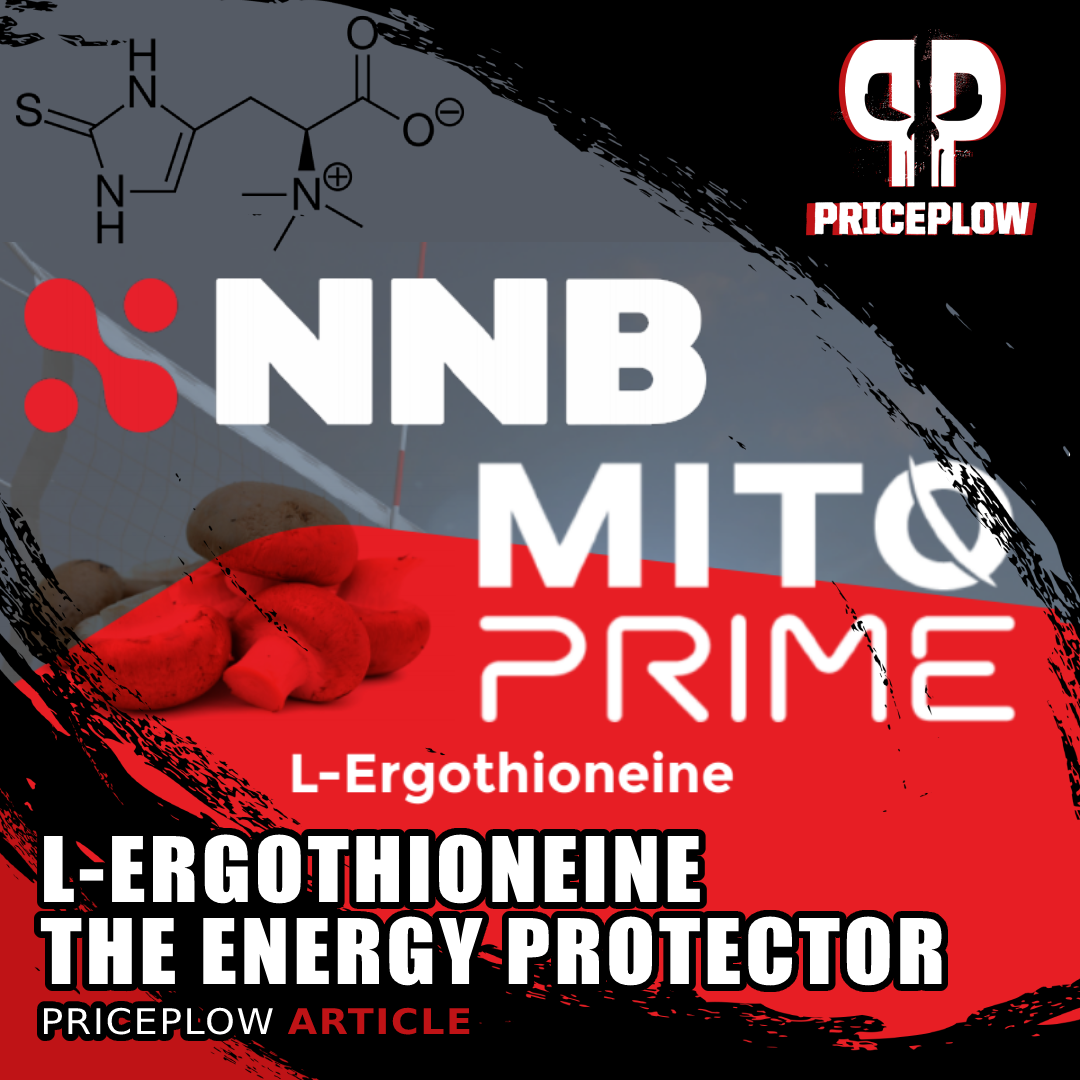
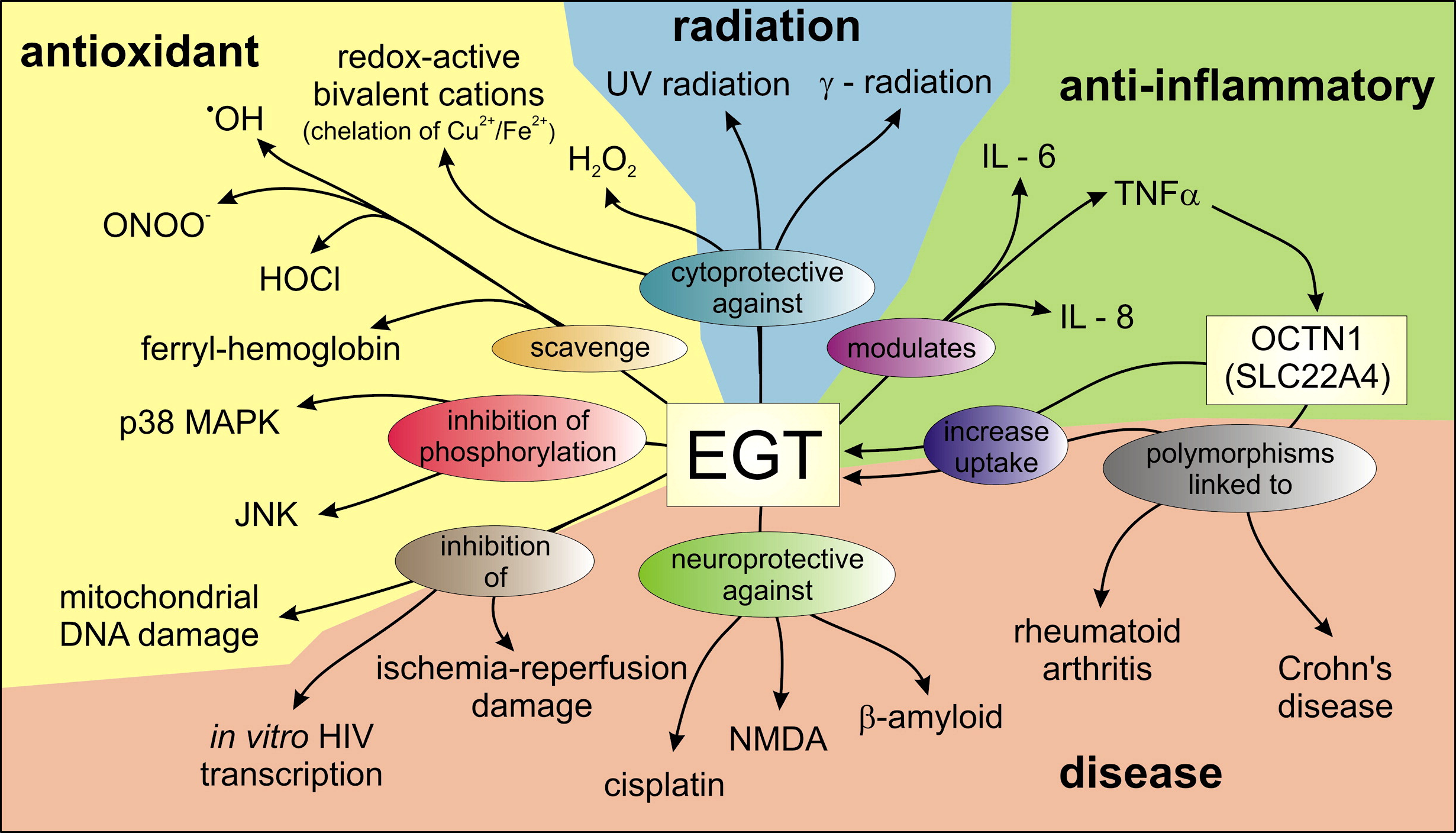
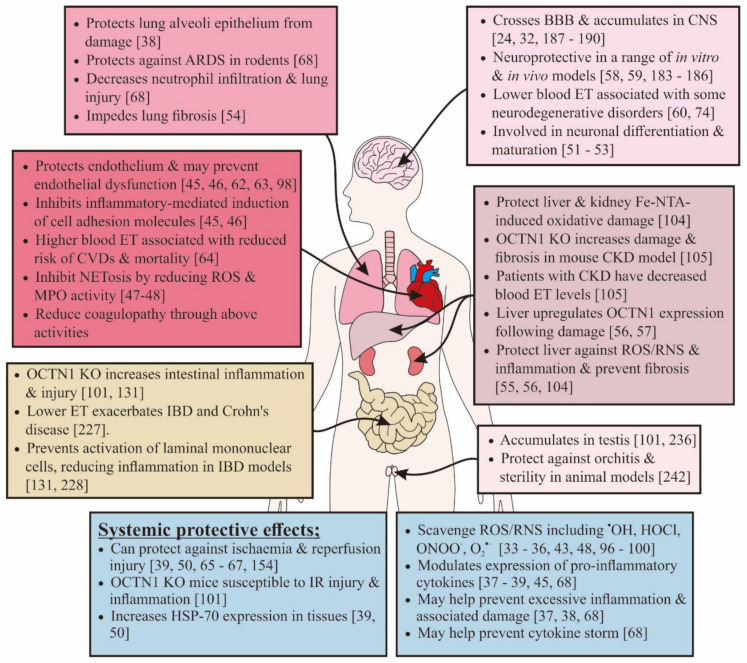
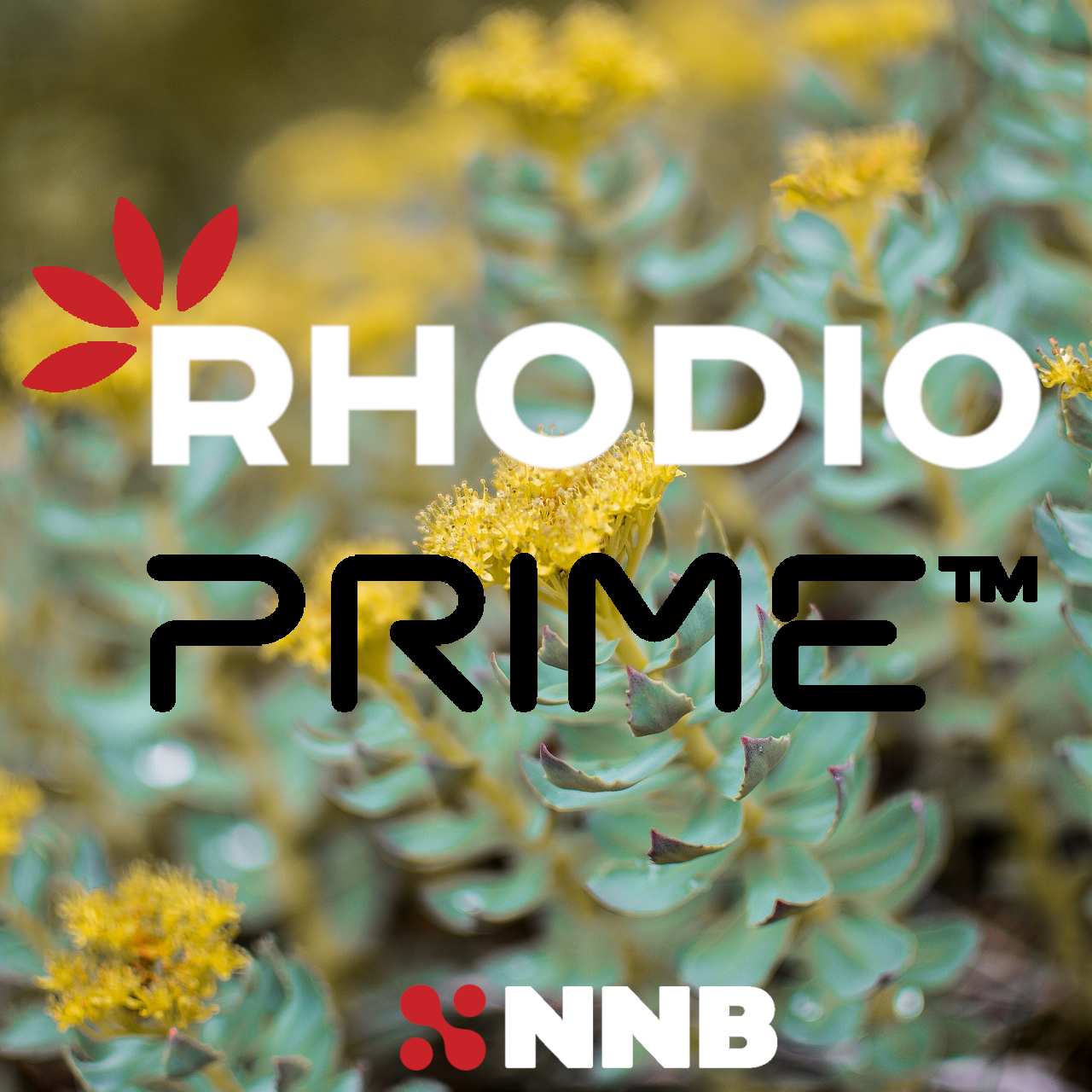
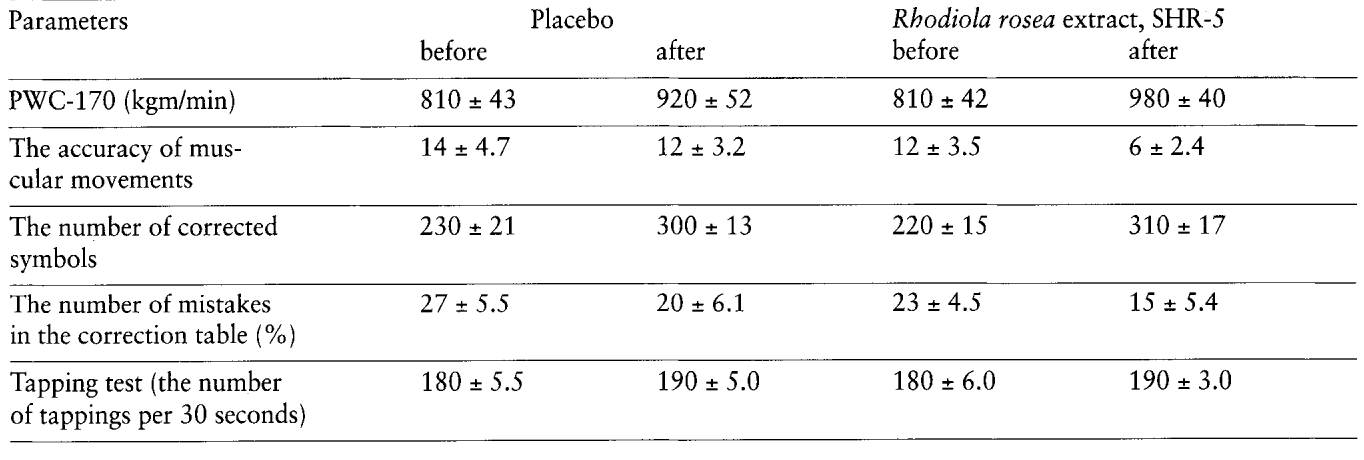
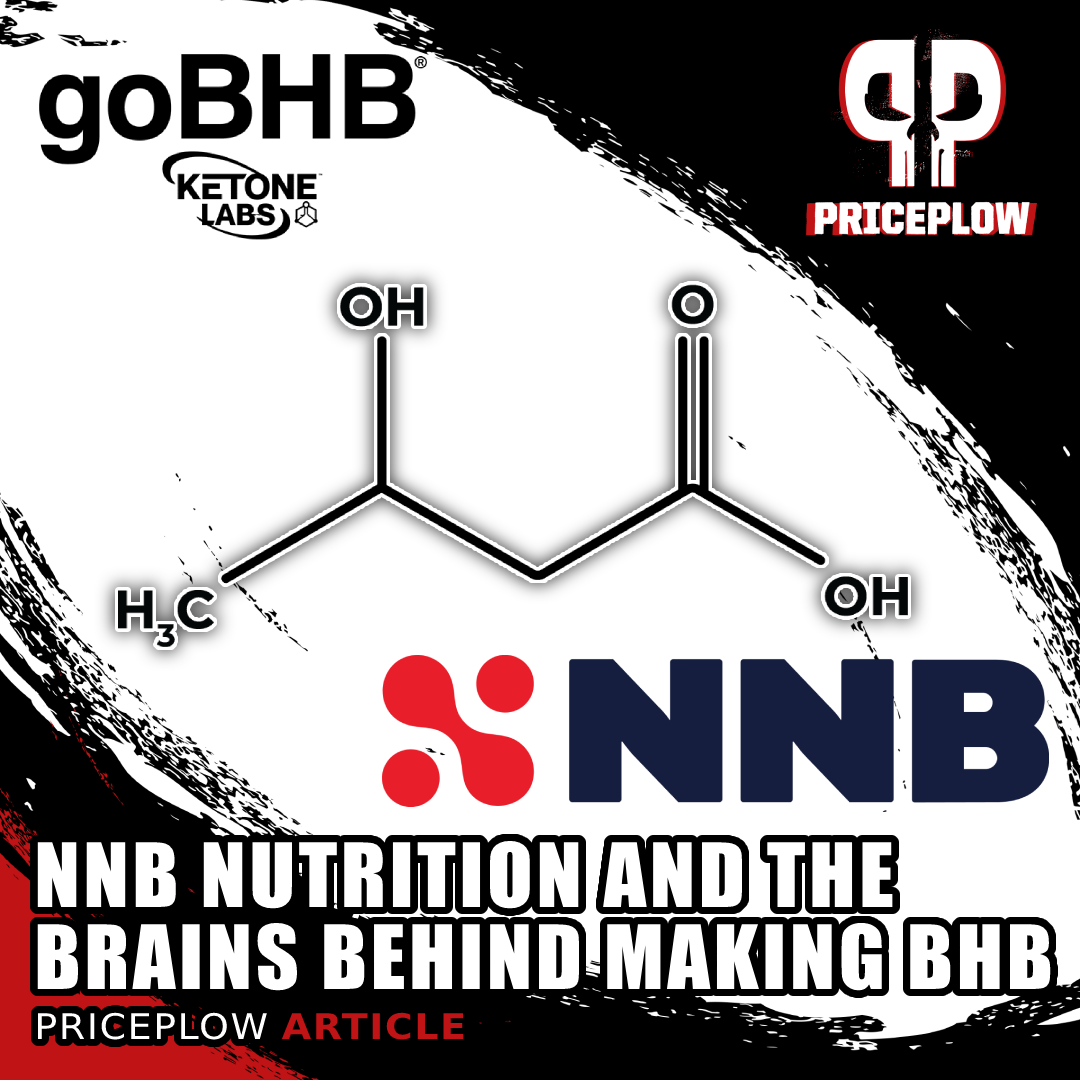
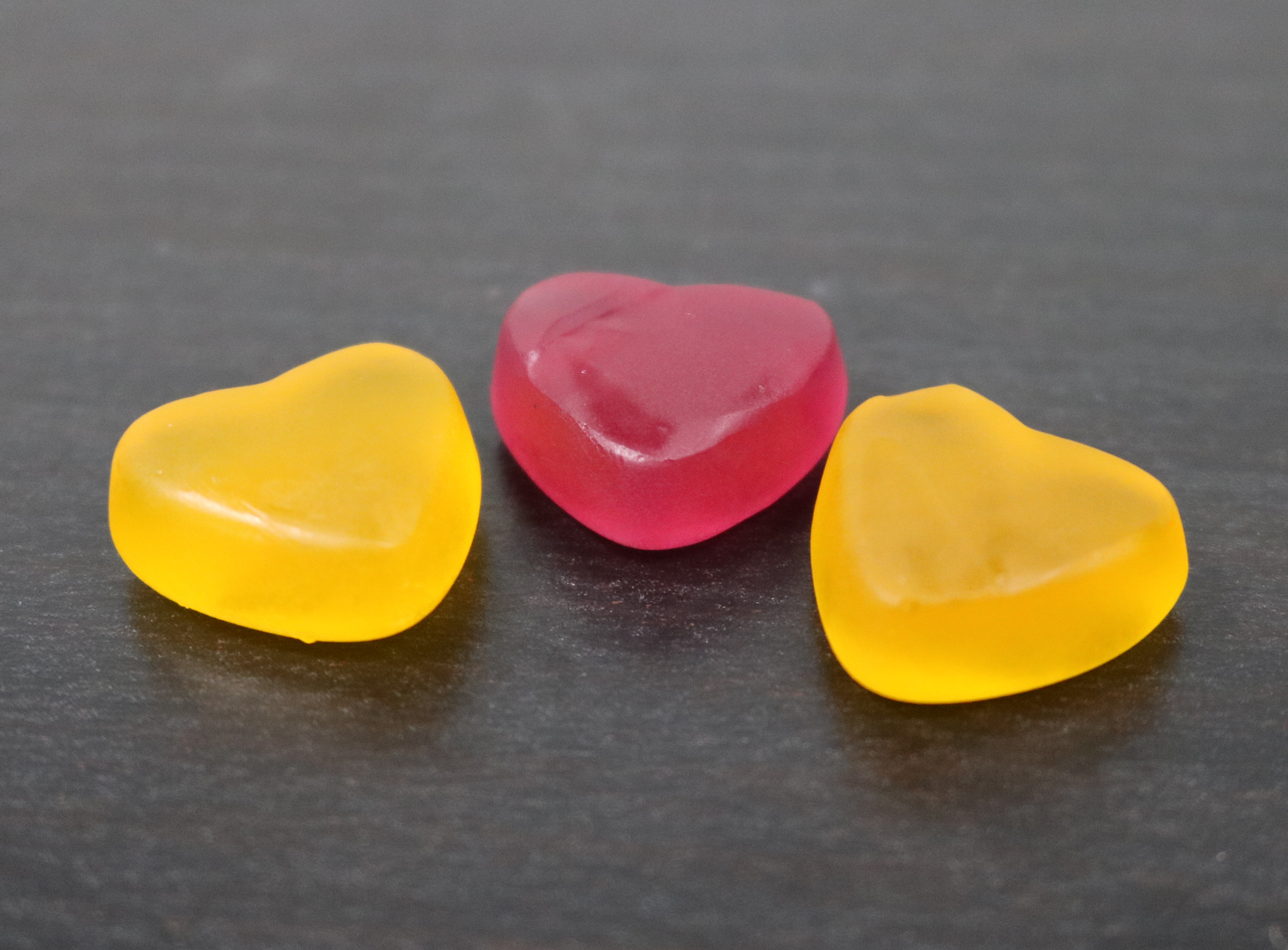


Comments and Discussion (Powered by the PricePlow Forum)